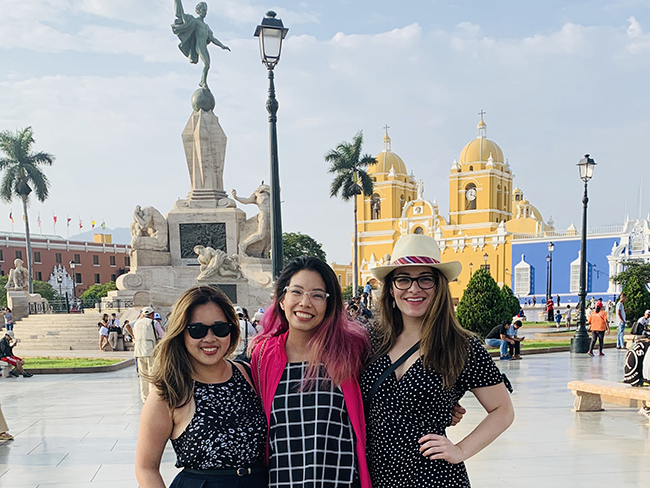Candice Mazon

Trujillo, Peru - The Medical Network
2019 MS4 senior elective
My four weeks in Trujillo, Peru through the Medical Elective Network was an unforgettable month. I was met with the utmost generosity from my homestay family, Claudia and Natalia. When I wasn’t on clinical experience, I had time to take medical Spanish classes. These classes were so valuable and made me more confident during my clinical experiences. I gained a foundation to build off of to better my Spanish outside of the program so that I will be able to communicate with Spanish-speaking patients in the future.
I spent time at the city’s public health center—a robust care center that provided services for all specialties including pediatrics, obstetrics and gynecology, an emergency room, and even a small inpatient wing within the clinic itself. It was evident that worked with limited resources. I’ve heard doctors say they had to carry and buy their own gloves as local clinics or hospitals where they worked sometimes ran out of gloves. The emergency area within the public clinic is treated like a primary care office because local primary care practices would often see 100-200 patients a day.

Health inequities were also evident. On Fridays, us students and some doctors would go to community health fairs. The health fairs brought care to marginalized populations in different areas. For example, we went to a men’s prison and a school in the city’s most impoverished area. We encountered a lot of chronic pain and complaints that needed to be worked up. However, we could only treat these patients using the limited medications that we carried, such as Tylenol or vitamins. There were no x-rays, CT scans or blood tests that we could do. Even though there is universal health care, socioeconomic status can guide what care you receive.
However, the issues that I noticed within the health care system in Peru are also the same ones that we have in America—overcrowding, health inequities and limited resources in health centers located in more impoverished areas. It has been common for students to go to another country for a global health trip and automatically jump on the differences and accrue assumptions about that place and its people. What I found instead are parallels between Peru and America in both the great and the not-so-great. I saw a great emphasis on public health and in health education. One thing that I was in awe of in Peru that I long for in America is the emphasis that health care is a right. Ultimately, the othering that might occur becomes futile, and global health is defining itself not just by our differences but also by our similarities.

In the end, my month was filled with exploring, discovery and the utmost wonder (and, most notably, amazing food). I was able to meet people in all walks of life and see parts of the world I haven’t seen before. I am left wide-eyed and amazed, with a full heart and fuller belly. Perú, nunca te olvidaré.
Back to Top